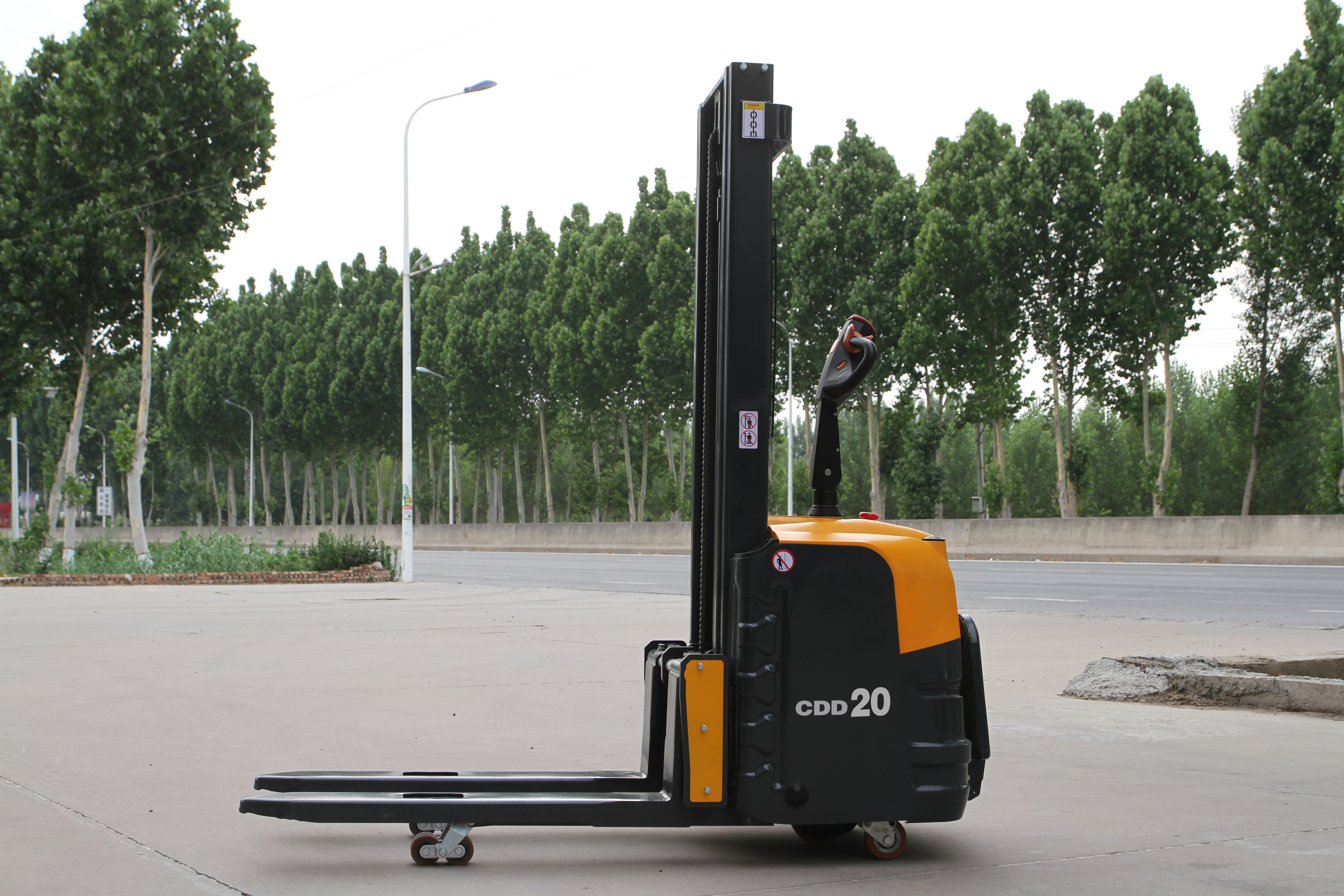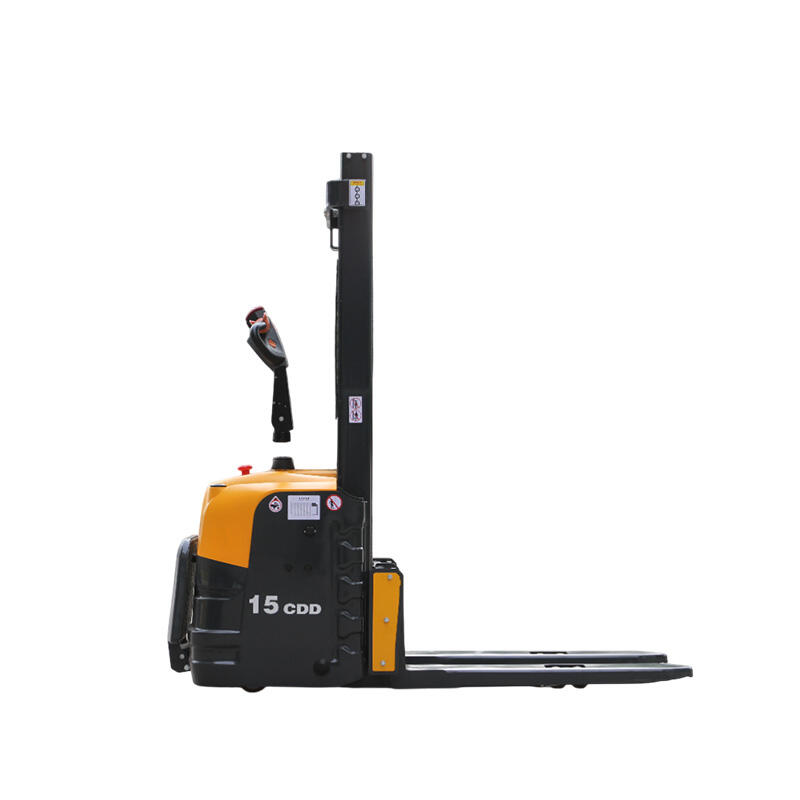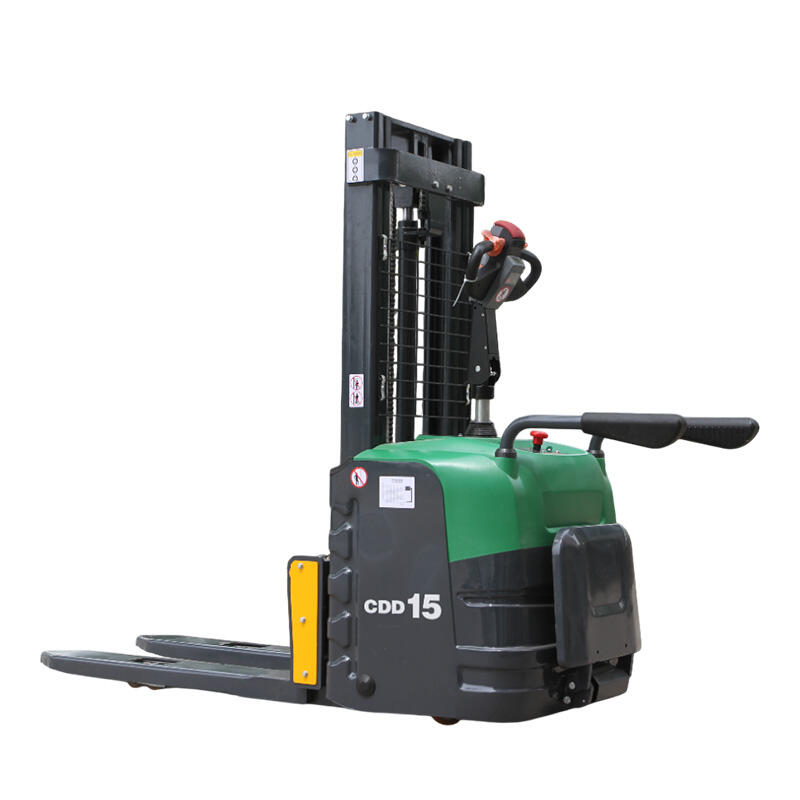מדרדרת הידרוליקה חשמלית היא ציוד טיפול חומרי רב-שפע ויעיל המשלב את כוח החשמל עם אמינות המערכות ההידרוליקות כדי לשדרג את פעולות הרימת והדרדרת במגוון סביבות תעשייתיות. בניגוד למסדרות ידיות אשר מסתמכות על מאמץ פיזי, מכונות אלה המופעלות על ידי חשמל מציעות פרודוקטיביות משופרת, הקלה נמוכה של המפעיל, ושליטה מדויקת על פעולות הרמת והורדת, מה שהופך אותן אידיאליות למחסן, אחד היתרונות העיקריים של מדרדר הידרולי חשמלי הוא קלות ההפעולה. מצויד במנוע חשמלי, הוא מבטל את הצורך במשאבה ידנית, ומאפשר למפעילים להתמקד בתמרון הציוד ובמיקום המטען בדיוק. המערכת ההידרוליקה, המופעלת על ידי המנוע החשמלי, מבטיחה הרמת חלקת ותמידת, גם בעת טיפול במשאבים בעלי קיבולת מקסימלית, אשר יכולה להיות בין טון 1 ל-3 טונות או יותר בהתאם למודל. זה הופך אותו מתאים למגוון רחב של גדלי עומס, מפלטים של סחורות לחלקים של מכונות כבדות. תכונה בולטת נוספת היא בקרת המהירות המשתנה, המאפשרת למפעילים להתאים את מהירות הרימת והנסיעה בהתאם לדרישות הספציפיות של המשימה. בין אם זה להעביר מטען במקומות צרים או לנווט במעברים עמוסים של מחסן, המוסך ההידרולי החשמלי מציע מנועה מצוינת, הודות לעיצוב הקומפקטי שלו ולכיוון מגיב. מודלים רבים מגיעים עם ידיים ארגנומיות שקל לתפוס ופיקוח אינטואיטיבי, כולל כפתורים או מנופים להרים, להוריד ולנסוע, להבטיח שגם מפעילים חדשים יכולים להיות מיומנים במהירות בשימוש במכשיר. עמידות היא סימן מובהק של מדרגות חשמליות הידראוליות באיכות גבוהה. המכונות האלה בנויות מחומרים חזקים כמו פלדה ברמה גבוהה, הן בנויות כדי לעמוד בקשיים של השימוש היומיומי בסביבות תעשייתיות קשות. הצילינדרים והמפפות ההידרוליים מתוכננים לעמוד בפני קורבן, להבטיח ביצועים ארוכי טווח ודרישות תחזוקה מינימליות. בנוסף, מודלים רבים מכילים כיסוי מגן ומגנים כדי להגן על רכיבים קריטיים מפני אבק, חורבנים ונזק מקרי, ולהרחיב עוד יותר את תוחלת החיים של הציוד. בטיחות היא עדיפות עליונה בפעולות טיפול בחומרים, ומסדרי הודראוליים החשמליים מצוידים בציוד בטיחותי שונים כדי להגן על המפעילים ועל הסביבה הסובבת. אלה עשויים לכלול מערכות הגנה על עומס יתר שמונעות מהמכונה להרים עומסים העולים על קיבולתה המונונית, להבטיח יציבות ולהפחית את הסיכון לפיכות. כפתורי עצירת חירום ממוקמים באופן אסטרטגי לגישה מהירה, המאפשרים למפעילים לעצור את הפעילות מיד במקרה של חירום. פלטפורמות אנטי-זזזות ועיצוב בסיס יציב גם תורמים לניהול בטוח, גם כאשר לטפל במשאבים כבדים על משטחים לא רמוכים. השפעיות של מכילי הידרוליקים החשמליים היא יתרון מרכזי נוסף. ניתן להשתמש בהם למגוון משימות מעבר לריכוז פשוט, כגון הטעינה והורדת משאיות, ארגון מלאי, ותחבורה של סחורות למרחקים קצרים. מודלים מסוימים מגיעים עם מזלגות קבועות שניתן להרחיב או לצמצם כדי להכיל גדלים שונים של חבילות, בעוד אחרים מציעים מזלגות מסתובבות או יכולות שינוי צדדי כדי להקל על מיקום עולד מדויק. התאמה זו הופכת אותם מתאימים למגוון רחב של תעשיות, כולל לוגיסטיקה, ייצור, מזון ומשקאות, תרופות ותיקון. יעילות אנרגיה היא שיקול חשוב עבור עסקים מודרניים, ומסדרי הידרוליקים החשמליים מצוינים בתחום זה. הם מופעלים על ידי סוללות שניתן לטעון מחדש, הם מייצרים אפס פליטות, מה שהופך אותם ידידותיים לסביבה ומתאימים לשימוש בפנים, שם איכות האוויר היא חשש. הסוללות נועדו לספק שעות עבודה ארוכות על טעינה אחת, ומודלים רבים מגיעים עם אינדיקטורים של סוללה מובנים כדי להזהיר את המפעילים כאשר יש צורך בטעינה מחדש. בנוסף, מערכות בלמים מחודשות במודלים מתקדמים מסייעות להאריך את חיי הסוללה על ידי ההמרה של אנרגיה קינטית בחזרה לאנרגיה חשמלית במהלך ההאטה. תחזוקה פשוטה עם מערכות חיבורים הידרוליות חשמליות, הודות לעיצוב המודולרי שלהם וגישה קלה לרכיבים המרכזיים. משימות תחזוקה שגרתיות כגון בדיקת רמות הנוזל ההידרולי, בדיקת סוללות, ושמן חלקים נעים ניתן לבצע במהירות, מקטין את זמן הפסקת הפעילות ולוודא כי הציוד נשאר במצב עבודה אופטימלי. יצרנים רבים מציעים גם חבילות שירות מקיפות וחלקים חלופיים זמינים בקלות, שמפחיתים עוד יותר את הטרחה הקשורה לתחזוקה של ציוד. בעת בחירת סטיילר הידרולי חשמלי, חשוב לשקול גורמים כגון קיבולת עומס, גובה הרמת הרמה, חיי הסוללה, ונימוס כדי לוודא שהוא עונה על הצרכים הספציפיים של הפעלה שלך. בין אם אתה צריך לטפל מטען קל בסביבה קמעונאית או חבילות כבדות במחסן, יש מודל סטיילר הידרולי חשמלי שנועד להתאים את הדרישות שלך. השקעה במארג הידרולי חשמלי באיכות גבוהה יכולה להוביל לשיפורים משמעותיים ביעילות התפעול, להפחתת עלויות העבודה ולהגדילה של היצרנות. עם ביצועים אמינים, תכונות בטיחות מתקדמות, ותפעול ידידותי לסביבה, המכונות האלה הופכות לכלי חיוני לפעולות טיפול חומרי מודרניות. על ידי בחירת המדרדר הידרולי החשמלי הנכון לעסק שלך, אתה יכול לשדרג את זרימת העבודה שלך, לשפר את בטיחות מקום העבודה, ולהישאר קדימה במראה התעשייתי התחרותי של היום.


